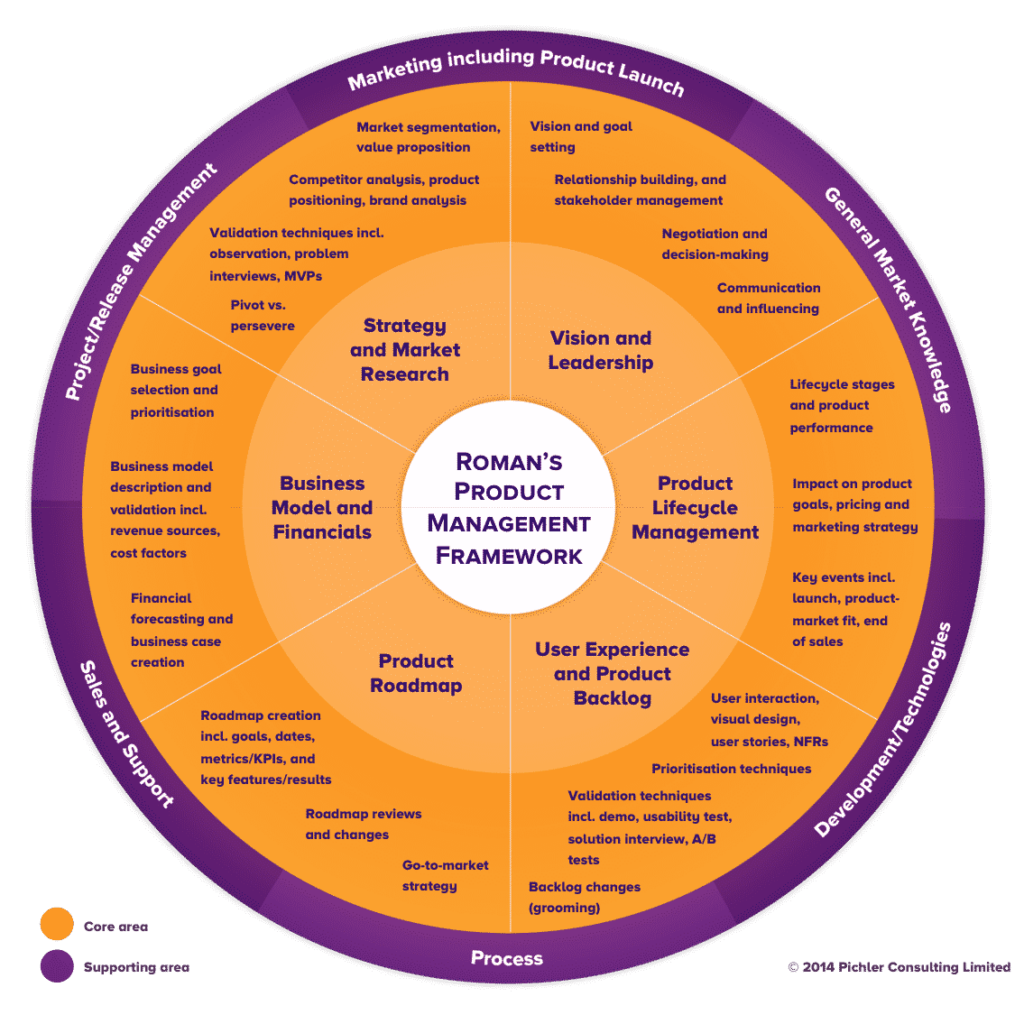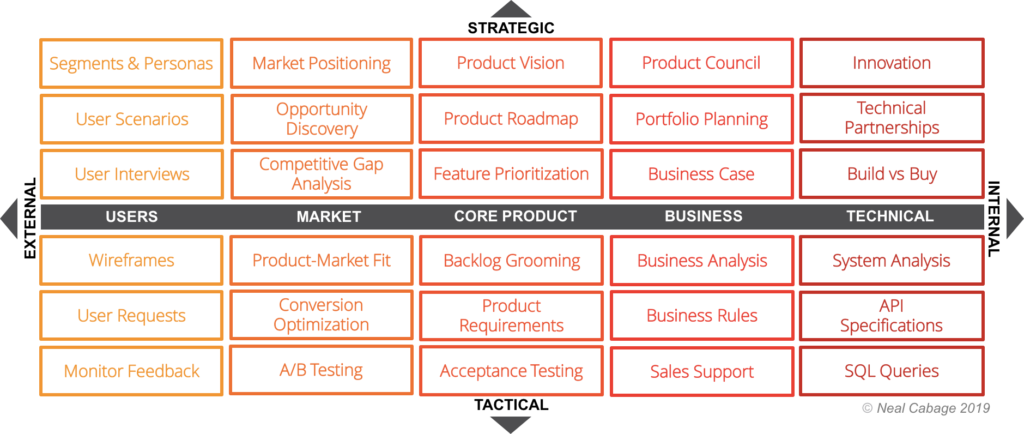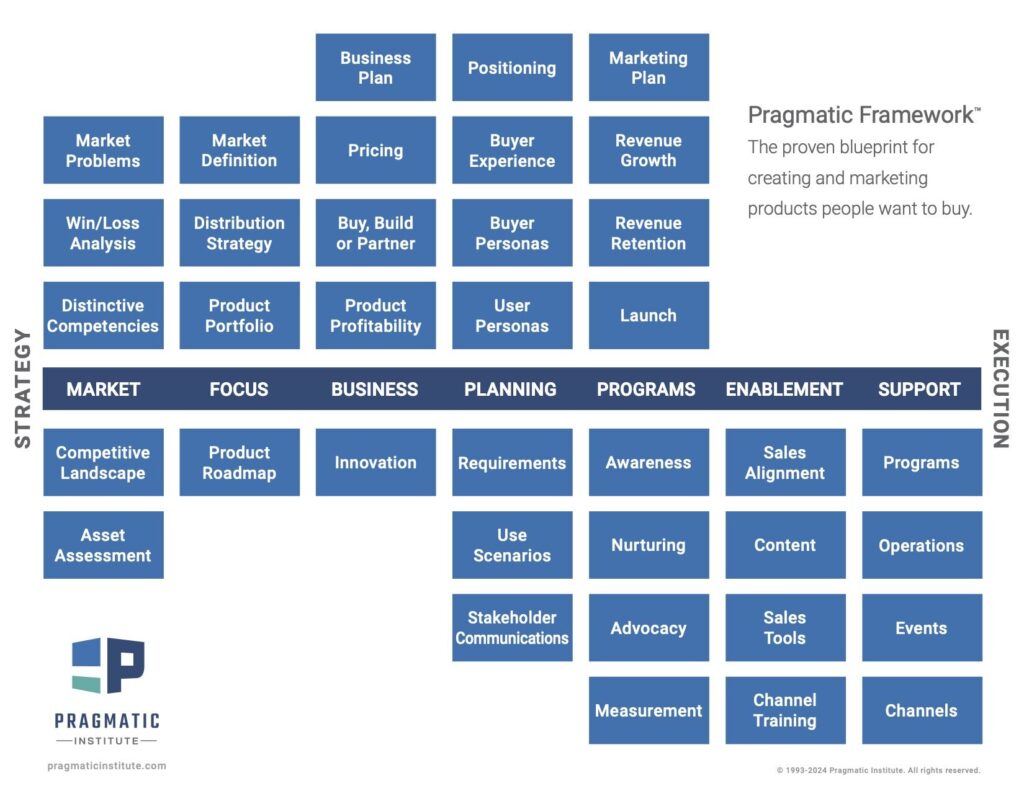Product management is a multidisciplinary field requiring a wide array of skills, knowledge, and strategic thinking. In this guide, we’ll explore Product Management Frameworks that can help individuals and teams build successful products while identifying areas for growth.
This post aims to:
- Introduce Product Management Frameworks and their role in developing digital products.
- Guide readers on conducting a self-assessment or team audit to identify areas for improvement.
- Outline tasks and competencies needed for product success.
Whether you’re transitioning into product management, filling the role in a small startup, or looking to sharpen your skills, this guide will provide actionable insights to help you thrive.
What Are Product Management Frameworks?
Product Management Frameworks outline the knowledge, skills, and processes required to create and manage successful products. They differ from Product Processes Frameworks (e.g., Design Thinking, Lean Startup) by focusing more on roles, competencies, and strategic alignment.
While no one excels at every aspect of product management, the key is teamwork and recognizing where you can shine versus where others on your team should take the lead.
You can read my own journey from marketing to product management.
Roman Pichler’s Product Management Framework: Core and Supporting Areas

Roman Pichler, a leading voice in product management, developed a framework comprising six core knowledge areas and six supporting ones.
Core Areas
- Product Strategy & Market Research: Understand the market and define a winning product strategy.
- Product Leadership: Inspire and lead cross-functional teams.
- Innovation & Product Lifecycle: Drive innovation and manage the product lifecycle effectively.
- Product Backlog: Prioritize and manage product requirements.
- Product Roadmap: Visualize and communicate product plans.
- Business Model & Financials: Align product initiatives with financial goals.
Supporting Areas
- Marketing (e.g., Product Launch)
- General Market Knowledge
- Development/Technologies
- Processes
- Sales & Support
- Project/Release Management
Pichler’s framework also delineates responsibilities for roles like Product Owners, Technical Product Managers, and those managing in-house products. Find a more in-depth explanation at Roman Pichler’s website.
Neal Cabage’s Product Team Competencies Framework

Neal Cabage’s framework focuses on evaluating team strengths and identifying growth opportunities. It uses a 2D grid:
- Strategic vs. Tactical
- External vs. Internal
Key Insights
- B2B Product Teams: Often lean toward strategic, external competencies (e.g., understanding client needs).
- Technical IT Infrastructure Teams: Tend to prioritize internal, tactical skills.
- Seniority Matters: Senior roles (e.g., VPs) are more strategic, while junior roles focus on tactical execution.
Cabage’s framework is ideal for self-assessment. Use it to pinpoint your team’s strengths and areas for improvement. Learn more about Neal Cabage’s framework on his site.
Pragmatic Product Management Framework: Strategy to Execution

The Pragmatic Institute’s framework is a roadmap for building and marketing successful products. Activities are divided into seven categories:
- Market: Understand your target market and unique positioning.
- Focus: Prioritize problems to solve.
- Business: Align initiatives with broader business objectives.
- Planning: Break strategies into actionable steps.
- Programs: Develop launch and marketing plans.
- Enablement: Equip teams for effective selling.
- Support: Ensure top-notch customer service.
Above and Below the Line
- Activities above the line focus on the market (external perspective).
- Activities below the line focus on the product (internal perspective).
For a detailed explanation of each category, visit Pragmatic Institute’s site.
Conducting a Self-Assessment
Use the following steps to assess yourself or your team:
- Map Strengths: Identify competencies where you excel.
- Spot Gaps: Highlight areas needing improvement using frameworks like Pichler’s or Cabage’s.
- Set Goals: Define actionable goals to close skill gaps.
- Leverage Resources: Use online courses, mentorship, or books to upskill.
Your Path Forward in Product Management
Mastering product management frameworks is an ongoing journey. These frameworks provide a structured approach to developing competencies, improving yourself or your team, and creating successful digital products. Remember, no single person excels in every area—teamwork and collaboration are key.

